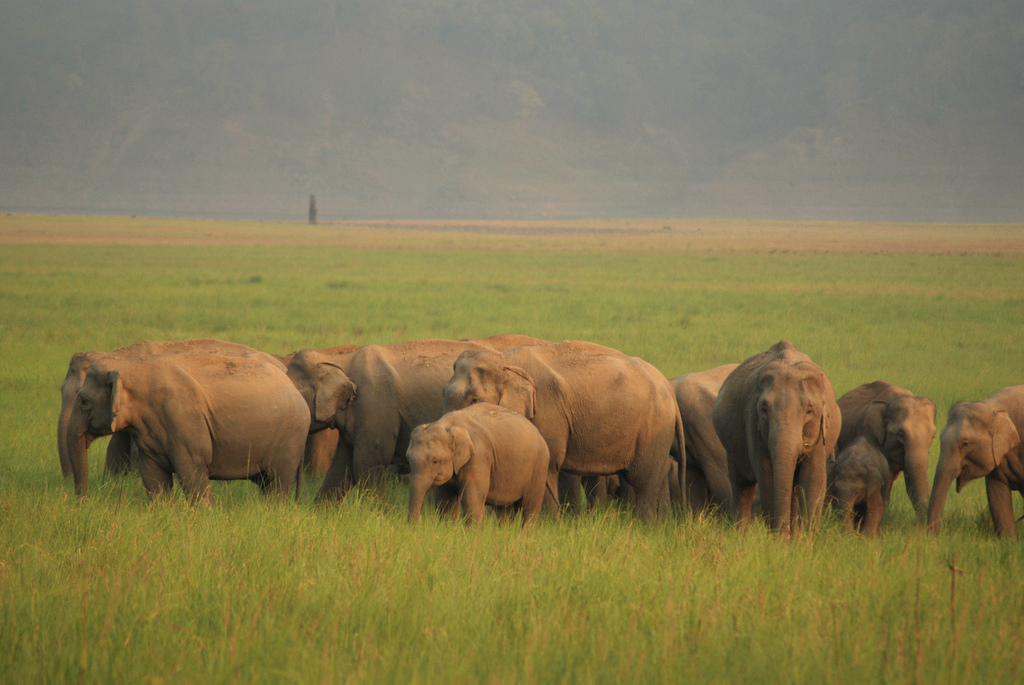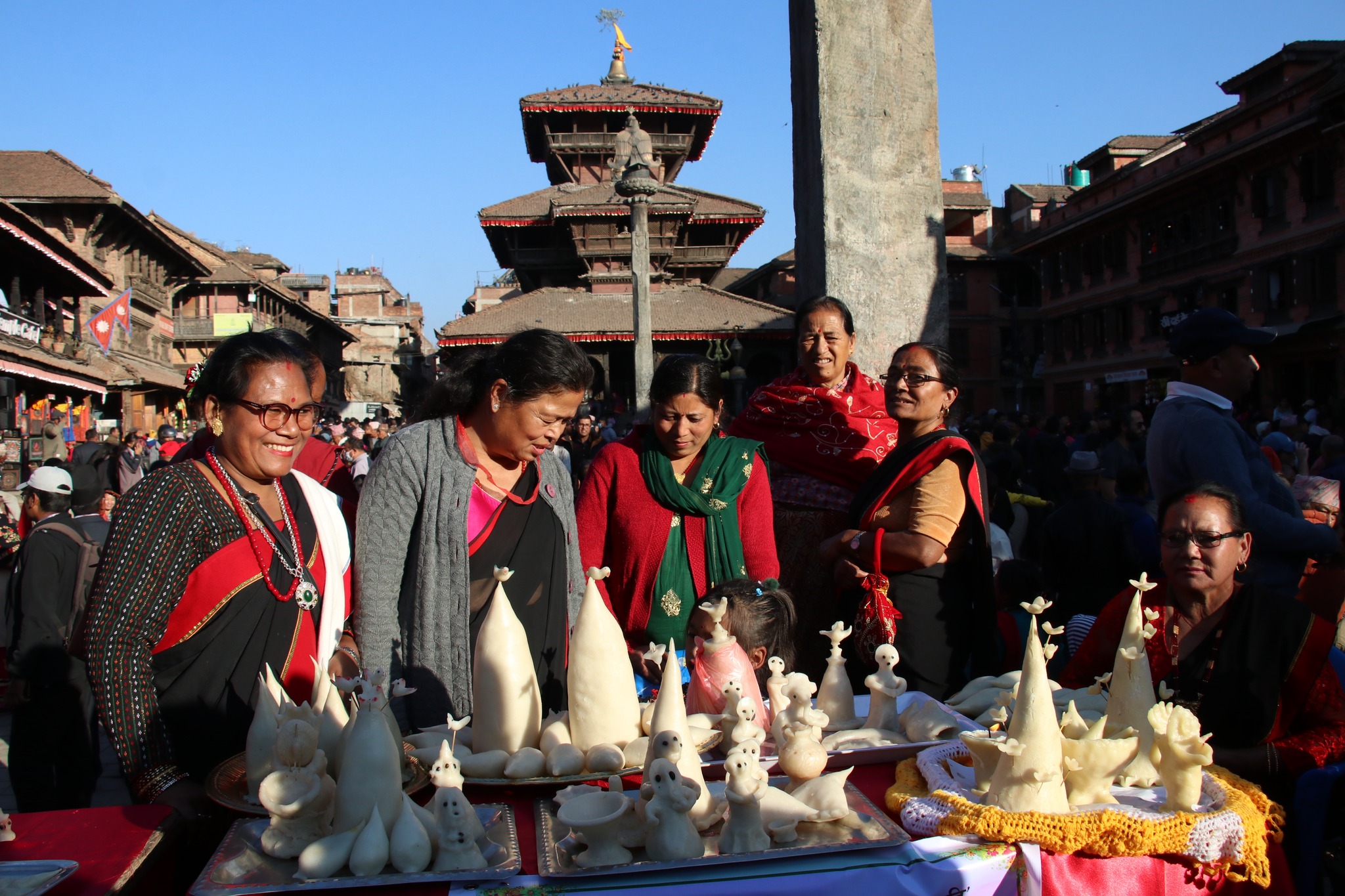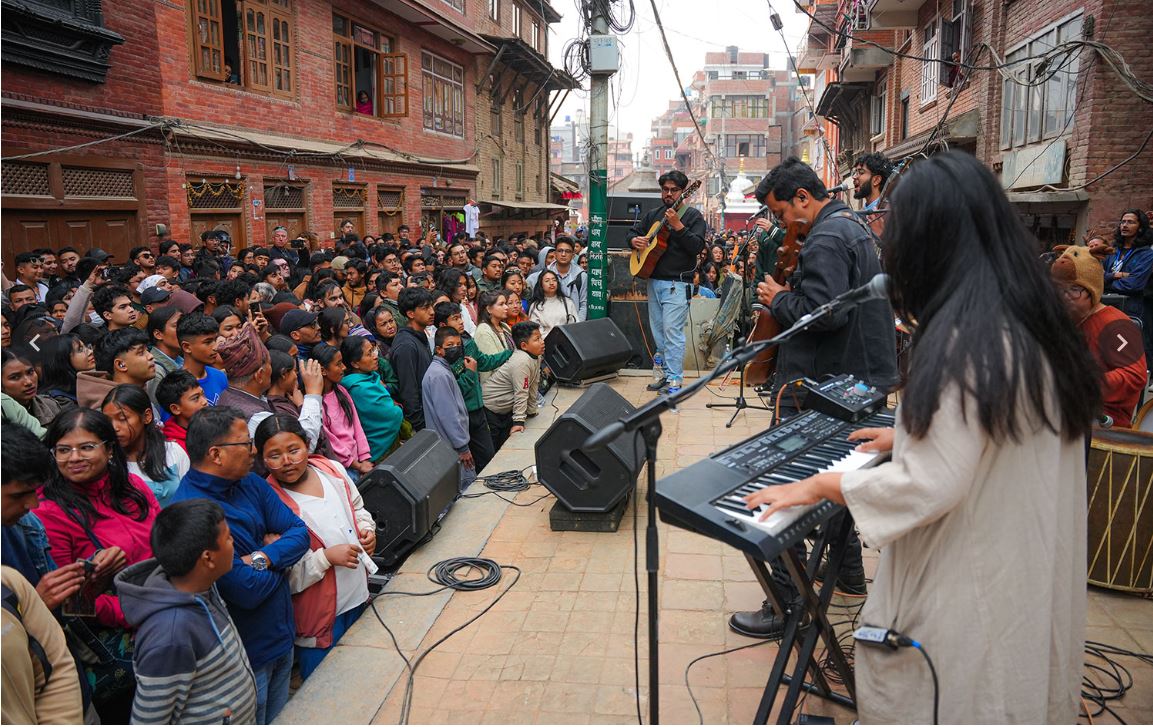
While reports of human casualties and destruction of property due to human-elephant conflict are just another piece of news for Kathmandu, it is a matter of life and death for 62-year-old Dhundi Raj Paudel and his fellow villagers of Bahundangi, a village in eastern Nepal along the border with India.
At a programme organised at a hotel in Kathmandu recently, Paudel attracted everyone’s attention. While speakers at the programme referred to him as ‘hatti baje’ (Elephant Grandpa), he smiled signalling his approval to the name.
But his smile has a deeper meaning. This time people in his village will be celebrating Dashain, Nepal’s biggest Hindu festival, after two decades.
Paudel was born in Khotang, a hilly district in eastern Nepal, in 1955. When he was 18, he migrated to Bahundangi, where land was fertile and habitation sparse.
“During the early days, we used to grow mustard, millet and limited amount of paddy,” Paudel remembers. In the years to come, the population of the area increased gradually, and the local took the initiative to build small-scale irrigation facilities.
“Soon the production of maize and paddy shot up,” he remembers. But the village folk, happy with bumper harvest, could imagine how their success would have unintended consequences.
The maize and paddy would attract herds of wild elephants looking for a change in taste from their regular bland food.
“It was around 1977. I think we spotted 1-2 wild elephants coming to our village from the Indian side,” he says. “But the locals did not take it seriously.”
Representational photo: Wikimedia
The number kept on increasing. By 1995, they started coming in herds of as many as 120. The ‘tourist’ elephants would enter the village at night, plunder all the maize and paddy, and return to India in the morning on a high.
It was then that the locals decided to try out different things to drive away the elephants, who would come two months before the monsoon, and two months after the rainy season — just in time for the maize and the paddy harvests.
“We tried scaring them with fire, then fireworks, and even chilly powder. But nothing worked.”
According to government figures, more than 25 people died in elephant attacks in the area in the last five years, and hundreds have been injured.
“It was around 1998 when Thapaji, a neighbour of mine, tied the knot with an Indian bride. They were killed on the first night of their marriage, that too when they were asleep,” remembers Paudel, for whom incidents like these are hard to forget.
With these kinds of stories becoming everyone’s concern, the people in Bahundangi started demanding that the elephants be killed. For one last time, they tried fencing off the area, but that too did not work.
But Paudel, who had seen many troughs and ridges in his life, firmly believed that elephants also have the right to live. “Man has to conduct himself in a way different from that of the beasts. Even when animals hurt us, it does not mean we hurt them back.”
It was for his love for the destructive elephants that earned him the title ‘Elephant Grandpa.’
“The government of Nepal is party to different conventions and has promised to take good care of them. Lest we forget.”
For more than a decade, the residents of Bahundangi lived under elephant terror. A solution was hard to find.
But last year, the government of Nepal and the World Bank implemented a project under which solar-powered electric fence would be put up to secure the area from wild elephants. Local residents, who had seen what elephants can do when they are ‘high’, did not even demand compensation for the land on which the fence was to put up.
The 17.14 km-long fence was finally put up at a cost of around Rs 10.5 million.
After the fence became operational, any elephant that tries to cross get a shock of around 10,000 volts, and it does not dare come back.
According to a study conducted by the National Trust for Nature Conservation, maize yield has gone up by 95 per cent. Not a single elephant or a human has died.
Paudel knows that the fence is not a long-term solution to the problem, it has only transferred it from Nepal to India. People on the Indian side of the border allege that the elephants are now wreaking havoc on their side. According to reports, the West Bengal Government has written to the foreign ministry to raise the issue with Nepal.
But NTNC officials involved in the project said that fence was put up with the West Bengal government’s consent. “They had told us that even they would like to use it if it is successful in Nepal,” says Dr Siddhartha Bajracharya of NTNC.
“We know that the problem has been transferred. But should we not be allowed to padlock our homes when dacoits are in town?” asks Paudel. He says that the fence just protects the village, and elephants can move freely further north into the jungle.
Experts working in the area of wildlife say that a long-term solution to the problem would have to involve switching of crops. If the elephants are after maize, why plant maize? They ask.
Plants such as lemon and tea have been observed to be effective deterrents against wild elephants. ”
“But people in Bahundangi have limited land holding per capita. And tea farming requires time. You get nothing for 2-3 years,” shares the Elephant Grandpa.
But with days of clear skies starting, people in Bahundangi want to bask in the sunshine while they have it, and think about the long-term, later.

























